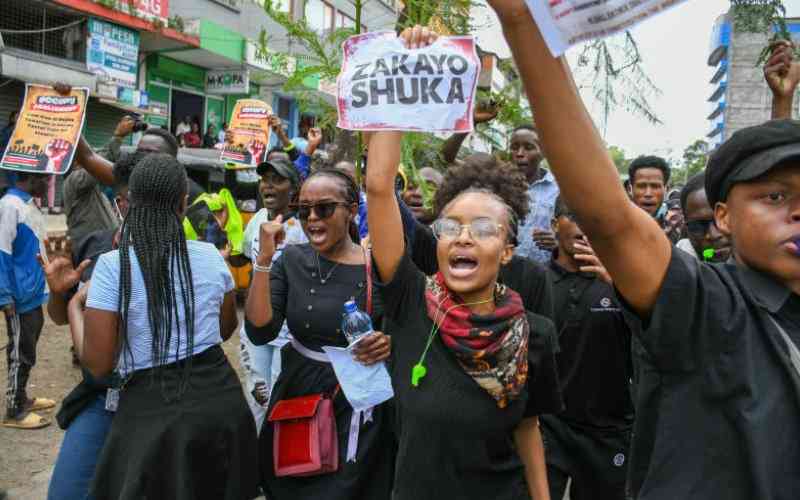
Different dress codes for various days of anti-government protests have conveyed distinct messages.
On June 18, the dress code was all black. Though Gen Z styled their outfits differently, the colour communicated the seriousness of their message. Some protesters printed black t-shirts with opinions and messages regarding the Finance Bill. The black colour symbolised solidarity, unity, and the somberness of the situation, highlighting the deaths of some protesters due to police actions.
On the second day of the demonstrations, the dress code was colourful to show the new generation's defiance and refusal to stand down as they witnessed governance issues in the country. The vibrant colours symbolised Gen Z's determination to reject the proposed Finance Bill by any means necessary. They took to the streets in various colours, designs, and styles. The dress code then mostly reverted to black until the Saba Saba festival, held in Uhuru Park on July 7.
Protesters were seen wearing and carrying kerchiefs and scarves, using them both as decorative pieces and protection against tear gas sprayed by the police. Many also wore face masks to ward off the tear gas.
The Kenyan flag was carried as a symbol of unity, evoking a deep sense of national pride. Many protesters incorporated the flag into their outfits as scarves or printed it on their t-shirts or caps.
A common outfit for protesters across different counties was comfortable and versatile: jeans, T-shirts, and sneakers. Gym clothes were also popular, likely for their comfort during running and physical exertion. Many others preferred sweatpants for their comfort.
Accessories completed the various attires. All manner of hats—bucket hats, caps, marines, head scarves, kerchiefs, and balaclavas—were worn for their stylishness and protection against the sun, rain, and tear gas. Hoodies, sweaters, and jackets in various designs and materials were worn for warmth and to make a statement.
Some Gen Z protesters opted to wear makeup, wanting to look good even in protest, while others wore no makeup, apart from toothpaste applied under their eyes to minimise the sting of tear gas.
Notably, parliamentary outfits were seen on the streets after protesters made their way into Parliament. Some wore black attire over white garments and climbed trees to reenact the Zacchaeus Bible story—a tax collector—with a message to President William Ruto to descend from power.

Creativity was also evident, with some making sack clothes with the emotional message, “If I die tell Mama I did the best for this country," symbolizing the country's state of poverty. A number of Gen Z protesters wore crop tops, dresses, and sandals, while others opted for pyjamas, suggesting they had just gotten out of bed.
Kasmuel McOure, a guitarist, advocate, and activist known for his fashion sense, brought a formal dress code to the protests. Some accused him of dressing to camouflage and not be identified as a protester, but he maintained that it is his usual way of dressing.
Almost all protesters were armed with smartphones, placards, water bottles, and the Kenyan flag as they voiced their opposition to what they termed bad governance.